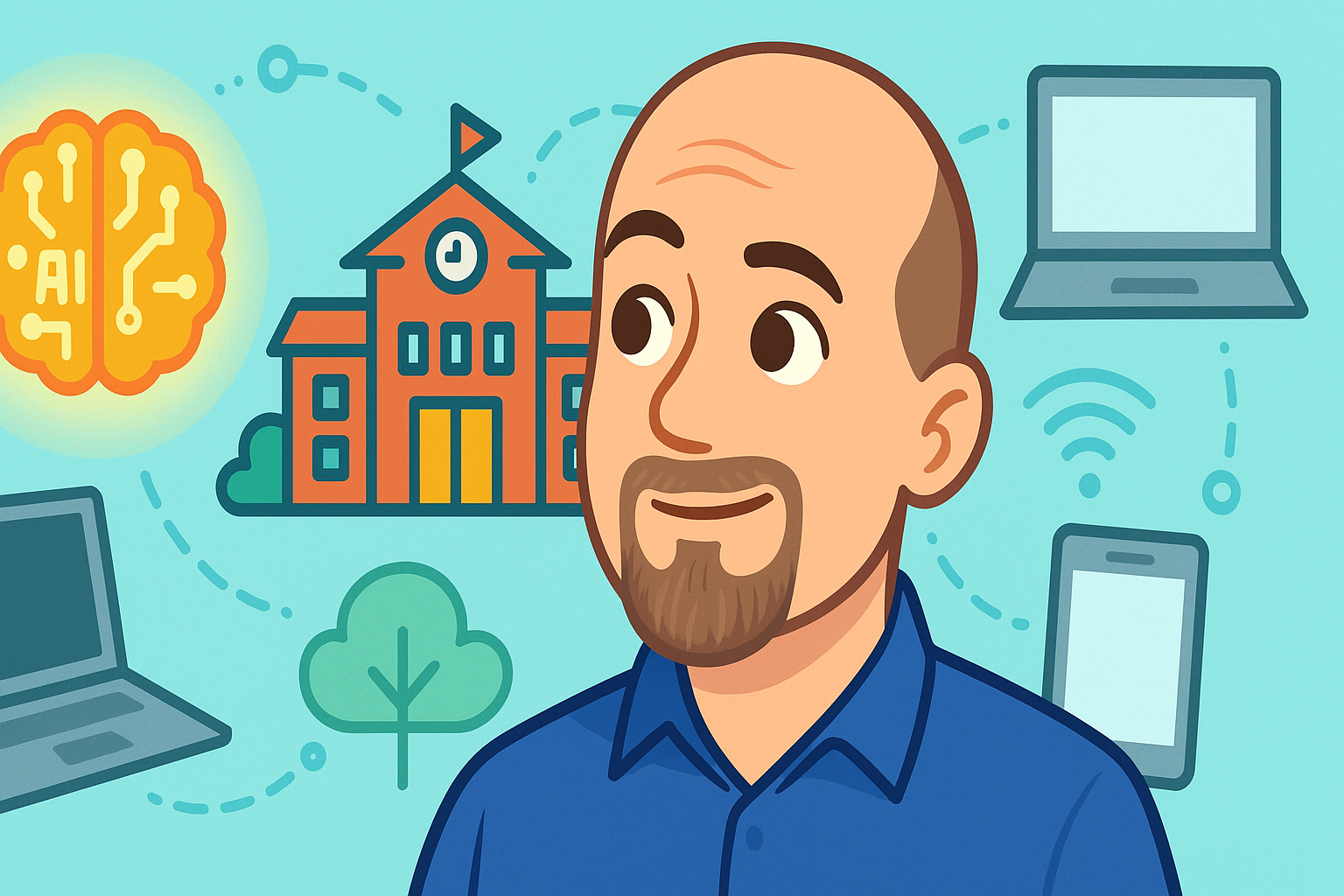Leading with Curiosity: How Dr. Jeremy Sullivan is Future-Proofing a K–12 District with Purpose, Platforms, and a Personal Touch
When Dr. Jeremy Sullivan arrived in Washington’s North Kitsap School District from Springfield, Missouri, it was the middle of a pandemic—and a moment of urgent transition. Remote learning had exposed longstanding equity gaps, and the district needed someone who could not only lead a one-to-one initiative, but rethink what learning could look like.
“I came out to launch the one-to-one initiative,” Jeremy said, “and I’ve just really hit the ground running.”
In this episode of Vetted by Mark Vetter, Jeremy shares how he’s built a future-ready district—one that blends innovation, equity, and safety—with a focus on platforms that serve people, not the other way around.
Tech That Reflects Real-Life Needs
North Kitsap is now one-to-one K–12, with Chromebooks for every student. While the elementary devices mostly stay in school, flexibility is key—especially in a district surrounded by water and weather-prone terrain. “We get a lot of power outages, so a mobile fleet has been important for continuity,” Jeremy explains.
One of his biggest shifts? Helping the district transition from Microsoft to Google Workspace for Education. “Google is what I’ve always used,” he notes, “but we still support Microsoft for staff who need it, especially when dealing with state agencies.”
Managing that kind of hybrid environment means blending on-prem Windows 11 machines, Azure-born credentials, and a mix of Intune and Active Directory—decisions driven not by brand loyalty, but by what best meets staff and student needs.
Digital Safety is a Leadership Mandate
Jeremy doesn’t shy away from the complexities of cybersecurity, especially in politically sensitive environments. From rolling out MFA (multi-factor authentication) district-wide to filtering student access with GoGuardian and Cisco Umbrella, his team takes a multi-layered approach to safety.
“Safety and security isn’t always convenient,” he says. “But it’s what we have to do to protect our systems—and our kids.”
Perhaps most powerful is how Jeremy turns cybersecurity into learning moments. When launching student MFA with Clever, he used it as a springboard to teach digital responsibility through library media classes and even read-alouds with tech-themed children's books.
The payoff? “It’s amazing what kids will do for a sticker that says ‘Tech Tamer’—and the conversations that come with it are where the real impact happens.”
A Platform for Every Purpose
Rather than lock into a single stack, Jeremy believes in a “means-based” model. The district uses a mix of platforms like Amplify (CKLA), iReady, Panorama, and MagicSchool—selected for how well they meet specific instructional or administrative goals.
“One-size-fits-all doesn’t work for personalized learning,” he says. “So our motto is always: How might we?”
This philosophy extends to how the district approaches AI. Rather than adopting one tool, they’re piloting options like Gemini for admin teams and MagicSchool for classrooms—platforms with high privacy scores and strong guardrails.
Looking Ahead: AI, Assessment & Equity
Dr. Sullivan is bullish on the potential of AI to transform education—but only if it’s used to amplify human connection, not automate away its core.
“I think AI will finally be the catalyst that makes personalized learning real,” he says. “We’ve talked about it for years, but now the tools exist.”
In the next three years, he predicts a shift from product to process when it comes to assessment. “It’s not about a final paper anymore. It’s about how students think, how they collaborate, how they learn.”
Why It Matters
With four children of his own in the district, Jeremy brings both a leader’s perspective and a parent’s urgency. “I take student safety incredibly seriously,” he says. “And I root myself in the belief that every single kid deserves opportunity—no matter their zip code or who’s in front of the classroom.”
🎧 Listen to the full episode: Vetted by Mark Vetter with Dr. Jeremy Sullivan

